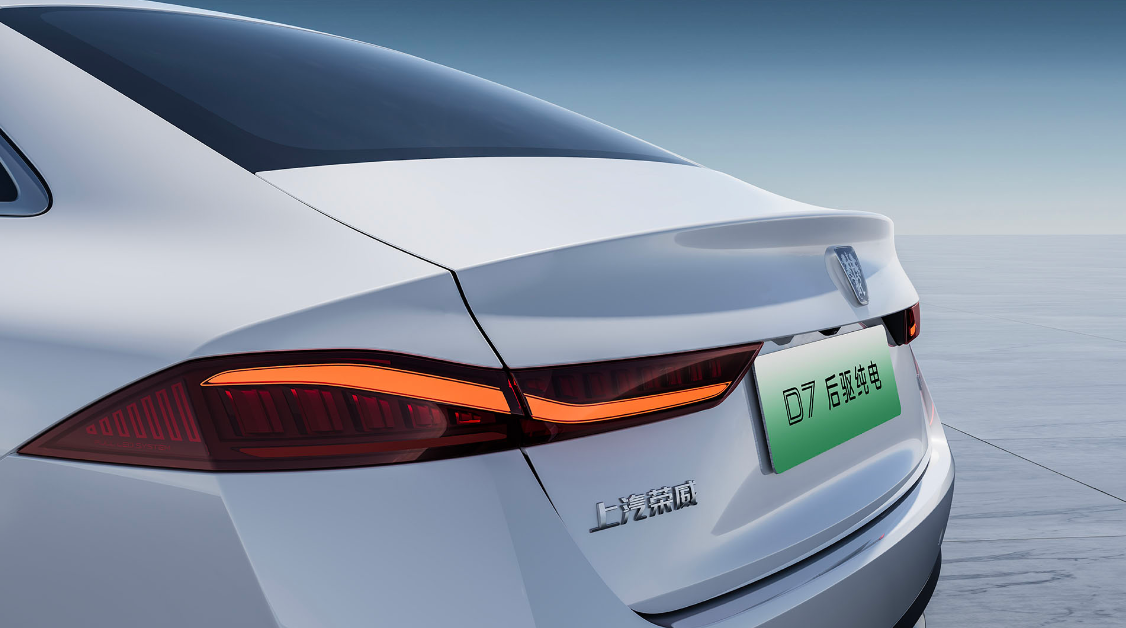SAIC Motor’s Roewe puts D7 DMH/EV onto market
Shanghai (ZXZC)- Roewe, a brand under SAIC Motor Passenger Vehicle Company, officially put a fire new sedan model, named D7, onto the market.

D7 DMH; photo credit: Roewe
As the first product of the brand's fresh new energy vehicle (NEV) range, the D Family, the D7 comes with two variants based on powertrain solutions: the Roewe D7 DMH (namely, PHEV), priced between 125,800 yuan and 145,800 yuan, and the Roewe D7 EV (BEV), with a price range of 149,800 yuan to 176,800 yuan. The official on-sale promotion price announced at the event ranges from 121,800 yuan to 170,800 yuan.

D7 EV; photo credit: Roewe
In terms of design, the Roewe D7 family adheres to the concept of "Technological Elegance," encompassing four key elements: elegance, sturdiness, purity, and finesse, said the automaker. Notably, the D7 features a front-end design that accentuates its technological and electrifying characteristics, with distinct differences between the D7 EV and D7 DMH in elements such as the grille, headlights, front-end design, and door handles. While the EV version embraces a tech-focused and minimalist style, the PHEV model incorporates more design elements reminiscent of traditional combustion engine vehicles.
The vehicle sports a sleek, aerodynamic design with a gently sloping roofline, a slightly tapered rear end, curved taillights extending to the sides, and concealed pop-out door handles – all aimed at reducing wind resistance. The D7 achieves an impressive drag coefficient of 0.23cd. As for dimensions, the pure electric variant measures 4,890mm in length, 1,872mm in width, and 1,510mm in height, while the plug-in hybrid model shares the same length and height but has a slightly wider width at 1,890mm, both featuring a 2,810mm wheelbase.

D7 EV; photo credit: Roewe
Continuing the design elements from the front, the rear end of the D7 features elongated taillights that extend along the sides of the vehicle, coupled with a ducktail spoiler, giving it a sporty and sleek appearance. However, the vehicle, despite its sloping roofline, does not feature a hatchback-style tailgate.

D7 EV; photo credit: Roewe
Moving to the interior, the Roewe D7 offers a cabin experience known as the "Yunsu" (translating to “Cloudy Abode”), featuring a warm and serene earth-tone color palette that exudes a sense of simplicity and luxury. The wrap-around horizontal design of the dashboard enhances the sense of spaciousness and a wide field of view. It also features dual 12.3-inch LCD screens that support customization of commonly used apps, seamless integration of in-car and smartphone navigation, and real-time displays of information such as traffic light countdowns and tidal lanes. Furthermore, rear passengers enjoy an exceptional level of comfort with 933mm of legroom and 116mm of knee room.

D7 EV; photo credit: Roewe
In terms of powertrains, the Roewe D7 EV features a rear-mounted single electric motor with a maximum power output of 155kW and a 0-100km/h acceleration time of 6.3 seconds. It offers two battery options, with corresponding comprehensive range of 510km and 610km under CLTC conditions.
On the other hand, the Roewe D7 DMH is equipped with a 1.5-liter hybrid-specific engine boasting an thermal efficiency of over 43%. It achieves a fuel consumption of 4.3L/100km and offers a battery-power-only range of 125km under the CLTC test cycle, with a combined range of up to 1,400km.
The introduction of the Roewe D7 marks the beginning of Roewe's journey into the world of NEVs. Over the next three years, the automaker plans to release eight NEV products, with the Roewe D5X expected to make its debut in December of this year.

